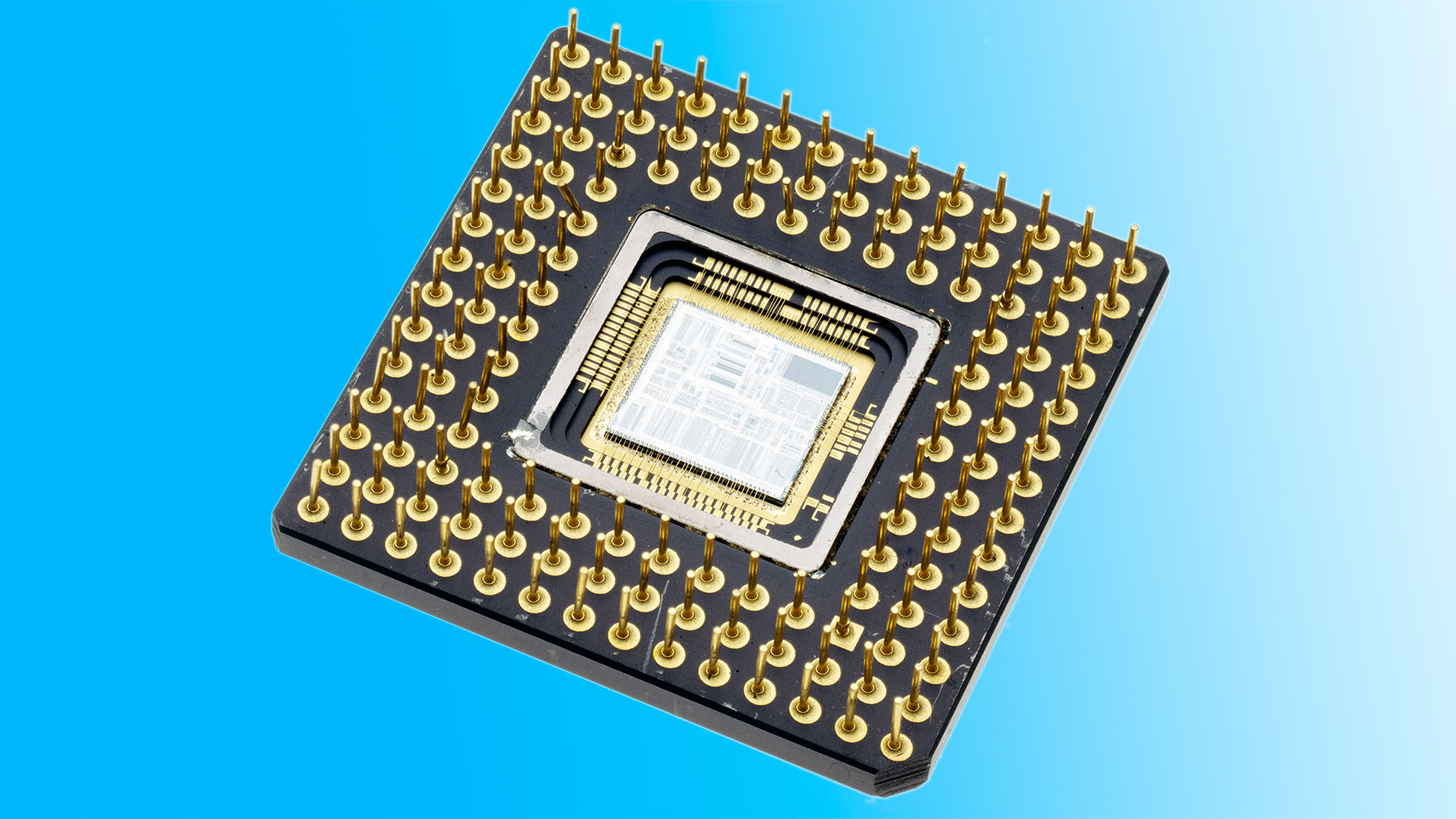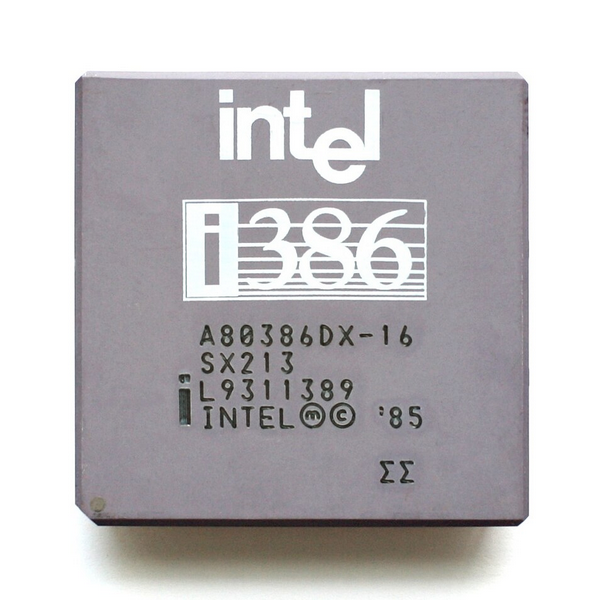The Intel i386 turns 40 years old — 275,000 transistors running at 16MHz changed personal computing forever
Intel's i386 brought 32-bit registers to x86 and paved the way for Windows 3.0 and Linux.

Intel’s 80386 turned 40 this week. Introduced in October 1985, the third-generation x86 processor — better known as the i386 — was the first 32-bit chip in Intel’s PC line, the origin point for the IA-32 instruction set, and the architectural turning point that transformed personal computing.
The i386 shipped with 275,000 transistors and ran at up to 16 MHz at launch. Internally, it brought 32-bit general-purpose registers, a flat memory model, and support for up to 4GB of address space, but the bigger change was to the system architecture. Protected mode, virtual 8086 mode, and hardware paging laid the groundwork for real multitasking and virtual memory on x86. Microsoft’s early i386 development kits included demos showing multiple DOS sessions running in parallel, each in its own paged VM. That became a core feature of Windows 3.0 in 1990, under the name “386 Enhanced Mode.”
Compaq was the first company to ship a machine based on Intel’s new CPU, following a rejection by IBM. The Deskpro i386, launched in September 1986, beat IBM to market by nearly a year. This was by design; the company had worked directly with Intel on the chip and had early access to silicon. Prices started at $6,499, and the system became a turning point for the PC industry, whereby Intel made the chip, but Compaq dictated the pace.

Linux, too, was built on an i386. Linus Torvalds’ first kernel release targeted 386-AT hardware explicitly, and his early development notes reference nothing older. The 386’s protected mode and paging features made it possible to build a real Unix-like system without writing elaborate workarounds. Torvalds dropped 386 support from the Linux kernel in 2012, more than 20 years after it launched.
Intel followed the i386 with the i486 in 1989, but the architecture stuck around for decades in embedded systems. The company didn’t end production of the chip until 2007. IA-32 — the i386’s instruction set — remained the backbone of Windows and most Linux distributions well into the 2010s.
Ultimately, the i386 wasn’t just a faster 286. It made x86 viable as a protected, multitasking software platform, something it had never been before. 40 years later, its core design still shows up in emulators, VMs, and legacy boot environments. The original chip might now be long gone, but the architecture it defined isn’t going anywhere.
Follow Tom's Hardware on Google News, or add us as a preferred source, to get our latest news, analysis, & reviews in your feeds.
Get Tom's Hardware's best news and in-depth reviews, straight to your inbox.


Luke James is a freelance writer and journalist. Although his background is in legal, he has a personal interest in all things tech, especially hardware and microelectronics, and anything regulatory.
-
das_stig Brings back memories of a 20 year old transitioning away from a Beeb To a homebrew SX25,4MB Ram, 120MB Quantum Bigfoot, Trident 8900D GPU, SoundBlaster compatible and some Cheapo SVGA CRT, DRDOS/Win311 .. ahh the days of Qemm.Reply -
GenericUsername109 Reply
I think you meant 120 MB HDD. GB was not a thing back then.das_stig said:Brings back memories of a 20 year old transitioning away from a Beeb To a homebrew SX25,4MB Ram, 120GB Quantum Bigfoot, Trident 8900D GPU, SoundBlaster compatible and some Cheapo SVGA CRT, DRDOS/Win311 .. ahh the days of Qemm. -
Tanakoi The 386 was truly the GOAT of CPU upgrades. For those of you happily exclaiming over a new node giving a 10-20% generational uplift, a 386 doubled the performance of the 286 before it ... and a simple 32-bit recompile would allow much software to run as much as 1,000% faster. No new chip since has come anywhere near as close.Reply -
EzzyB Reply
I just had a flashback to the IBM HDD I used back then as the main drive for my BBS. On paper it was a HUGE 85MB drive 😂. But, hey, I had an Adaptec RLL controller and access to it's low-level formatting utility via the Debug command so yeah, 135MB for me!GenericUsername109 said:I think you meant 120 MB HDD. GB was not a thing back then.
The drive was full-height, 5.25" and had 8 platters and 16 heads. It sat in a large tower case and on boot-up the whole case would sway back and forth as the drive POSTed. Good times! -
GenericUsername109 Reply
"Overclocking" a HDD? You could randomly lose/corrupt data with that. I once tried formatting a 360kb floppy as 1.2MB and it didn't go too well (it was like 50% bad sectors afterwards). :)EzzyB said:I just had a flashback to the IBM HDD I used back then as the main drive for my BBS. On paper it was a HUGE 85MB drive 😂. But, hey, I had an Adaptec RLL controller and access to it's low-level formatting utility via the Debug command so yeah, 135MB for me!
The drive was full-height, 5.25" and had 8 platters and 16 heads. It sat in a large tower case and on boot-up the whole case would sway back and forth as the drive POSTed. Good times!